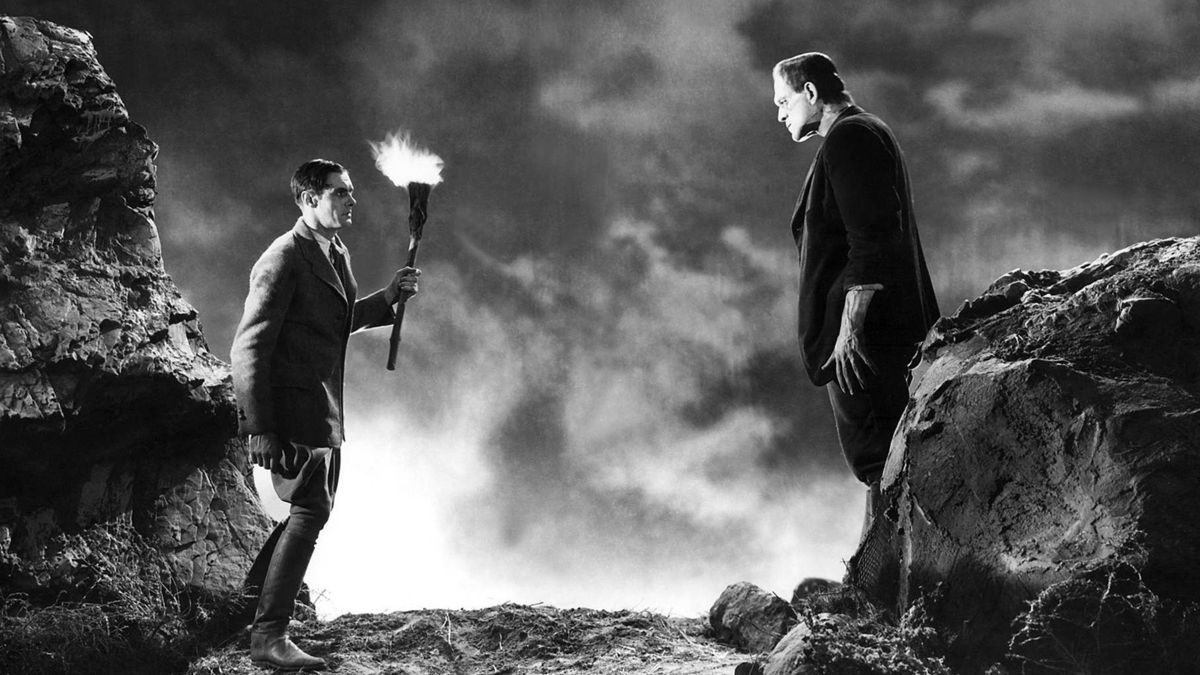Last Night I Watched: Frankenstein (1931)
The modern horror film owes a lot to the Universal Monster films of the 1930s. These early pictures influenced a lot of what we came to associate with horror cinema, and the 1931 version of Frankenstein is no exception. The film’s influence is clear on every mad scientist film that followed it, but does it live up to its cinematic offspring? In parts, yes – in other, more important ways, no, due to some fundamental issues in structure.
This version of Frankenstein plays fast and loose with Shelley’s book, something that benefits and harms it in equal measure. It tells the story of a young scientist called Henry Frankenstein (Colin Clive) and his assistant Fritz (Dwight Frye), who are working together, stealing parts of freshly buried bodies in order to create life. One stormy night, with visitors including his fiancée Elizabeth (Mae Clarke) and his former mentor Dr Waldman (Edward Van Sloan) witnessing his endeavours, Frankenstein succeeds. His creature (Boris Karloff), a monstrous form with the brain of an imbecile, appears childlike, but Frankenstein comes to the conclusion that he must kill it.
It goes without saying how important this film is in the lore of Frankenstein. Fritz is essentially the original Igor, the line ‘it’s alive’ originated here, and Karloff’s make-up came to define the Monster for years to come. But is it still effective? It would be hard to argue that a film that was terrifying in 1931 is still terrifying now, something that makes the opening scene, in which Van Sloan warns the viewer about what they’re going to watch, a little charming. Whale’s fantastic direction, however, means that much of the film still works well.
This film is a horror from the view point of Frankenstein, but a tragedy from the view point of the Monster
In the film’s first scene, Frankenstein and Fritz are grave robbing, and it ends in an unnerving shot of the two stealing a body from the gallows. The production design shines, and I really bought these scenes – it feels like a genuine moment with actual stakes. Whale builds a sense of atmosphere in every shot, meaning even the most fun of moments feel as if they could be impacted by horror. And, indeed, many of them are – the Monster invades a wedding to attack Elizabeth, and the body of a dead child is carried through the town square by a grief-stricken father. It’s good, in a way, that the visuals do so much work, because the script is somewhat iffy and much of the characterisation inconsistent.
One decision that rankled with me is the shift in Frankenstein’s character. The first half of the film, he is the mad scientist obsessed with his experiment, to the point that he rejects everyone in his life. Clive shines here – I buy him as this obsessive. But then, he’s just happy to leave killing the Monster to Waldman and he goes about his life, repackaged as a romantic hero – this didn’t sit right with me. The novel is concerned with the consequences of Frankenstein playing God, and the deaths that come as a consequence weight heavily on his conscience – he eventually flees to the Arctic to escape the Monster, and he dies after reflecting on his cowardice. Here, Elizabeth gets to survive, Frankenstein will soon have a grandchild, and the Monster burns to death. Frankenstein tries to have it both ways, and it doesn’t work, missing the point of the story in the process.
In its brief time alive, all the Monster seeks is warmth
It is said that this film is a horror from the view point of Frankenstein, but a tragedy from the view point of the Monster, and I completely understand that. Karloff’s Monster doesn’t speak, but he conveys a lot through gesture. In one of the film’s most famous scenes, the Monster encounters a child, the only person who is ever kind to it. They play a game throwing flowers into a river, and then the Monster accidentally drowns the girl in the mistaken belief that she too will float. Karloff’s reaction is still really sad, and it compounds on a scene earlier in the film when the Monster reaches for a ray of sunlight. In its brief time alive, all the Monster seeks is warmth.
Although the film and the book that inspired it are both named after the scientist, the 1931 Frankenstein makes the Monster the heart of the story. It’s an uneven watch today, and although Karloff’s acting and the direction remain compelling, a weak script and unconvincing characters often take you out of the experience.

Comments